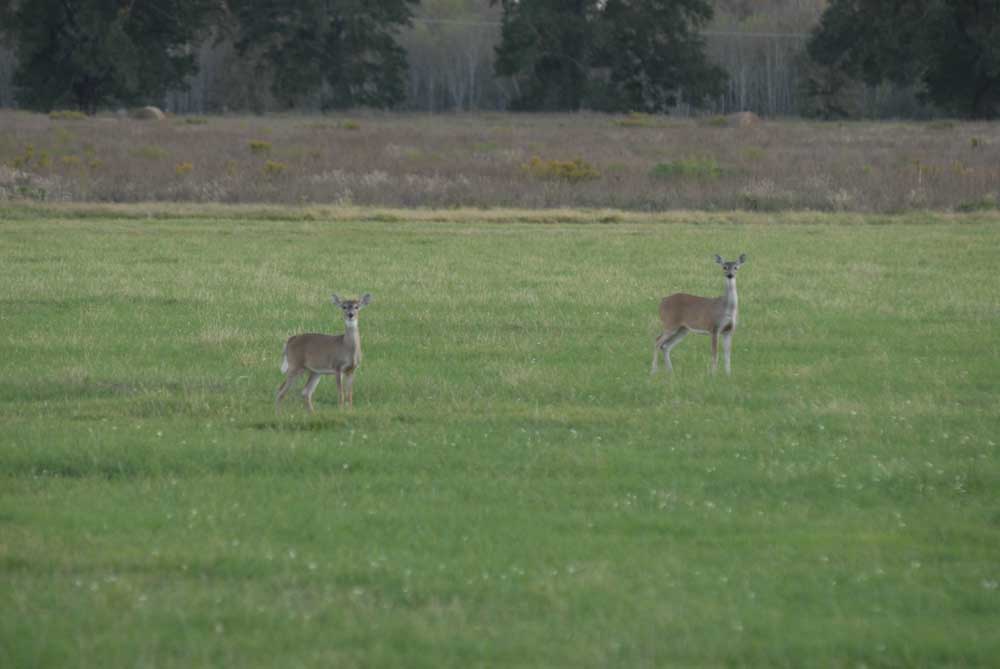More Is Better: Doe Days getting longer in Post Oak and Pineywoods regions
Published 10:29 pm Friday, May 24, 2024

- Hunters in Texas’ Post Oak and Pineywoods regions will have more chance to take a doe with doe days being extended from opening day until the Sunday after Thanksgiving. (Steve Knight/Tyler Morning Telegraph)
The Texas Parks and Wildlife Department has done East Texas hunters a solid and expanded doe days from opening day to the Sunday after Thanksgiving across the Post Oak and Pineywoods regions beginning this fall.
It is not a whole season, nor does it include Christmas, but it does give hunters of all ages a chance to hunt over Thanksgiving and take a doe.
East Texas has been left in the dust in the modern era of hunting regulations for one simple reason, it started from scratch. There were deer in eastern Texas when settlement of the state began, but their numbers declined with land clearing, market and subsistence hunting. The state introduced hunting regulations in 1861, but by 1903 the limit was still six bucks, and eventually the East Texas population totally cratered.
Despite TPWD starting a seven-decade restocking program in the 1930s deer numbers in some areas were slow to rebound because of changing land use and other factors. However, it has grown, just not like the Hill Country and South Texas where hunters can take up to five doe per season because of over-population issues.
Still eastern Texas is a popular deer hunting destination. Last season hunters in the Post Oak region hunted 1.3 million hunter days, taking almost 57,000 bucks and 43,000 does. In the Pineywoods there were 1.8 million hunter days and a harvest of 46,000 bucks and 36,500 does.
“When we looked at harvest that has been occurring and surveys we have been running for decades, the population is going up. Then we look at what is being harvested, and bucks and does are being harvested at a dipropionate rate, and there are too many bucks getting harvested,” explained Mason Conley, department Wildlife regional biologist for the Post Oak region.
He added that the result of a skewed buck/doe ratio in turn results in late born fawns, fawns that could have more trouble surviving extreme summer conditions compared to those born timely during the spring green-up of the two regions.
Without a harvest explosion on the female side, it is hard to see a downside of the extended doe days. It is doubtful that the harvest climbs because most hunters are only going to take a deer or two each year, and most are probably still going to be waiting on a buck.
Some may say that if a mature doe is taken too late that it might be bred. That argument is moot because the goal is to remove mouths, so again it does not matter if she is taken opening day or the last day of the doe days.
“As far as downside I don’t see it right now. The bag limit will not increase. Right now, the population can handle it,” Conley said.
While it is hard to compare eastern Texas to the Hill Country or South Texas, Conley said a comparable may be Mississippi, which has liberalized its doe harvest while still seeing the population climb.
An extended season does mean hunters are going to have to do a better job watching out for yearling or button bucks. The rule of thumb is not to shoot the first deer out on a food plot or at a feeder because it is often a young buck. Instead, wait until there are several, and after taking time to observe their head for nubs take the largest deer.
If there is an increase in the doe harvest it could also mean that at some point hunters will see less deer, but healthier animals. That, however, is probably a ways off.
Except for Bermuda pastures, smaller landholdings and town growth, Conley said East Texas has enough cover and nutrition to support the growing population at this time.
“I think we have a pretty strong food source like mass bearing trees and berries. In the south, that yaupon country that needs some help. If you can’t walk through it, it needs some help,” Conley said.
The biologist added that he believes deer are filling the areas they can, but some just don’t have the habitat and are not filling up like others.
After living under the antlerless permit system for decades, TPWD began converting to doe days in the early 2000s, going first from just four days to eventually 16 and now to much of November. Doe days opened the potential of harvesting does to more hunters since antlerless permits were issued on acreage quotas.
Counties that will be included in the extended doe days will include Anderson, Bell (East of I-35), Bowie, Burleson, Brazos, Camp, Cass, Delta, Ellis, Falls, Fannin, Franklin, Freestone, Gregg, Grimes, Harrison, Henderson, Hopkins, Hunt, Kaufman, Lamar, Leon, Limestone, Madison, Marion, Milam, Morris, Nacogdoches, Navarro, Panola, Rains, Red River, Robertson, Rusk, Sabine, San Augustine, Shelby, Smith, Titus, Upshur, Van Zandt, Williamson (east of I-35), and Wood counties.
TPWD will continue to monitor harvest numbers and population trends in case it must make a season adjustment down the road. Hopefully, if that occurs it will be to a full-season harvest regulation.






